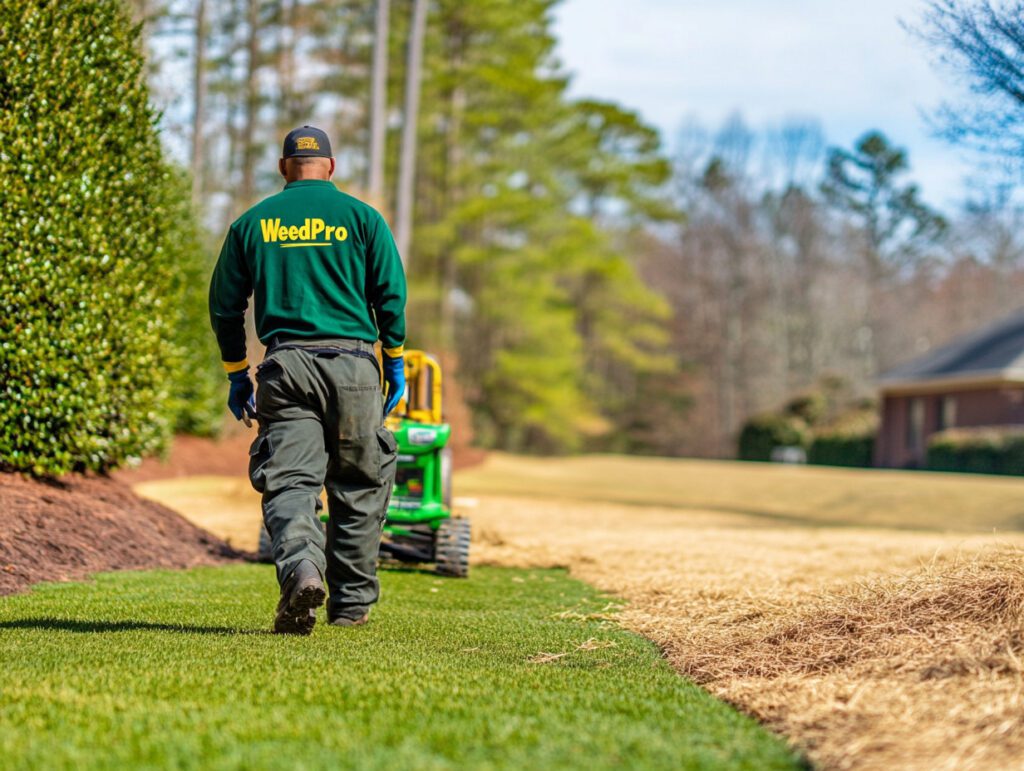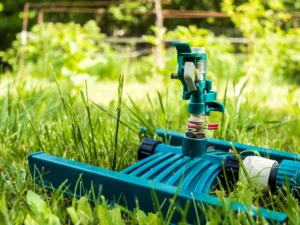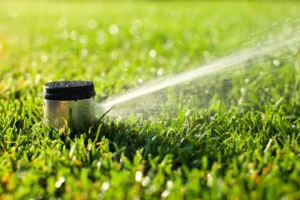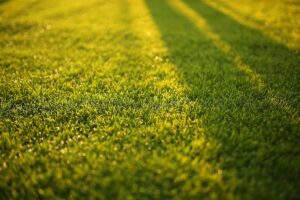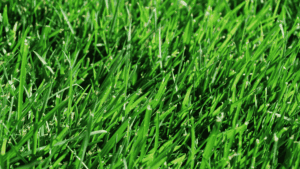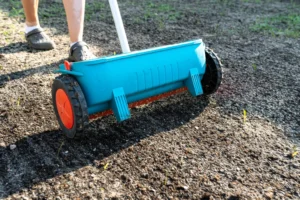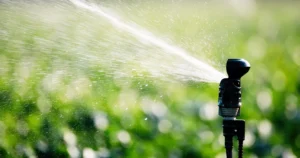To have a healthy, lush, and even lawn in Atlanta, the key may be the proper top dressing materials. With Georgia’s clay soils and warm-season turfgrasses, top dressing with sand, compost, or combinations of the two can transform compacted soils into fertile, well-drained lawns. In this article, we will review the use of river sand, USGA white sand, masonry sand, organic compost, and a sand and compost mixture, each of which requires addressing soil structure, drainage, nutrient uptake, and grass-type needs, and when to consider DIY or professional help from WeedPro.
Why Is Top Dressing Important for Atlanta Lawns?
Top dressing is a relatively simple process, involving the application of a thin layer of material over the existing turf to improve soil quality, smooth out irregular surfaces, and promote healthy root growth. For example, using a top dressing that combines screened sand and organic material in heavy clay soil can improve water movement. It takes a lawn that remains wet from weather and keeps grass from growing effectively to a friable root zone capable of providing adequate water and nutrients to promote vigorous growth.
How Does Top Dressing Improve Atlanta’s Clay Soil?
Coarse texture of sand breaks up dense clay particles and create pore spaces that increase drainage and aeration. This change in the structure of the clay will reduce pooling after heavy rain and will reduce surface crusting, allowing grass roots to efficiently access oxygen and moisture—the foundation for developing deeper and more resilient turf.
What Are the Key Benefits of Top Dressing for Lawn Health?
A well-maintained lawn will yield many benefits:
- Enhanced drainage and reduced compaction for healthier root systems.
- More even distribution of nutrients from organic amendments of all kinds.
- Thatch control by helping microbes break down thatch and debris.
- A consistent and even surface that creates better mower performance.
When combined, these systems will provide a denser, greener turf that can better withstand disease and drought.
How Does Top Dressing Help Different Grass Types in Atlanta?
Warm-season grasses, such as Bermuda and Zoysia, will develop healthier root systems with dressings high in sand content. In contrast, cool-season Fescue will benefit from moisture retention and nutrient enhancement by utilizing compost as its dressing. By properly customizing the amendments to the grass’s growing cycle, we can better manage the recovery and winter hardiness of warm- and cool-season grasses in the transitional climate of North Georgia.
Which Top Dressing Materials Work Best for Atlanta Lawns?
Material selection is based on your goals, the desired soil condition (i.e., drainage, nutrient enhancement, or leveling), and the availability of high-quality materials. Below is a summary of the most commonly used materials appropriate to Atlanta.
What Are the Advantages of River Sand for Top Dressing in Atlanta?
River sand is coarser and has rounded grains that help drainage and decrease compaction. River sand is also very affordable and can be sourced nearby. River sand is exceptional for breaking up Georgia clay soil and helping to smooth out small depressions on your lawn, without being so thick that it prevents root depth.
How Does USGA White Sand Compare for Lawn Top Dressing?
The USGA has passed stricter regulations on particle size for sports fields using white sand. The advantage of using USGA white sand is that it is uniformly graded, providing excellent leveling. USGA white sand also provides consistency in high-traffic areas. Despite being relatively pricey depending on availability, USGA white sand can lend to producing golf-course quality surfaces and resist settlement over time.
When Is Masonry Sand Suitable for Lawn Top Dressing?
Masonry sand is sufficient to fill in slight surface depressions and smooth out texture, but it will most likely compact with a heavy clay background without an offset of organic material. If you choose masonry sand, use as little product as possible for a light leveling project, rather than an entire soil restructuring.
River Sand vs. USGA White Sand vs. Masonry Sand
| Material | Drainage Improvement | Leveling Precision | Typical Use in Atlanta |
|---|---|---|---|
| River Sand | High | Moderate | Core clay amendment |
| USGA White Sand | Very High | Excellent | Premium lawns & sports |
| Masonry Sand | Moderate | Good | Small depressions & texture |
This comparison shows that river sand balances cost and drainage, USGA sand delivers top-tier uniformity, and masonry sand suits light leveling.
What Are the Benefits of Organic Compost for Atlanta Lawns?
Organic compost not only offers helpful nutrients to the soil but also increases microbial biomass and enhances moisture retention. This makes it a great option for Fescue and bare-spot repair as it offers a soft and eco-friendly boost for root development and disease prevention.
How Do Sand and Compost Blends Optimize Lawn Top Dressing?
Blending compost at 30% and sand at approximately 70% maximizes equilibrated percolation potential, allowing new fertility to enhance root development while improving or enabling short-term and real-time permeability. It will help maintain the soil structure and moisture plan for the season, especially for Bermuda and Zoysia.
When and How to Top Dress Bermuda Grass in Atlanta?
Top dress Bermuda grass at the very end of spring to the height of summer with a blend of sand/compost. After aerating the soil profile, top dress with about ¼–inch thick material and water lightly to ensure the material has reached the root zone.
What Are the Top Dressing Practices for Zoysia Grass?
Top dress with a top dressing that has at least a 50:50 concentration of sand along the shrub in the month of June or July. The goal is to identify and address the irregularities. Moderate watering to settle the dressing material is appropriate to thoroughly wet the dressing material and allow it to settle, but not to create a surface crust.
How to Top Dress Fescue Lawns in North Georgia?
Top-dress Fescue Lawns in early fall using a typical mix of products occurring over the growing months. As composting was optimal for prior seasonal growth due to its high new nutrient potential and moisture retention, begin to mix a compost/sand ratio at 50:50 and at a height of ⅛ and ¼ inch to improve the weeks leading up to winter germination, retention, and rooting strength.
What Are the Pros and Cons of DIY Top Dressing?
- Pros = reduced material and labor costs, and the opportunity to gain experience with educational processes.
- Cons = The equipment is not difficult, but it is inconsistent and labor-intensive, especially due to its uniformity across the surface area.
DIY would work best for small yards and for light leveling, but would find it challenging for a more complex task, such as deeper compaction, in large areas.
What Influences the Cost of Top Dressing Services in Atlanta?
- Area of the lawn and price per square foot
- Type of Material (Sand Grade, quality of compost)
- Pre-steps (Aeration, dethatching)
- Labor and Equipment costs associated with deploying.
Choose the Right Materials for Lasting Results
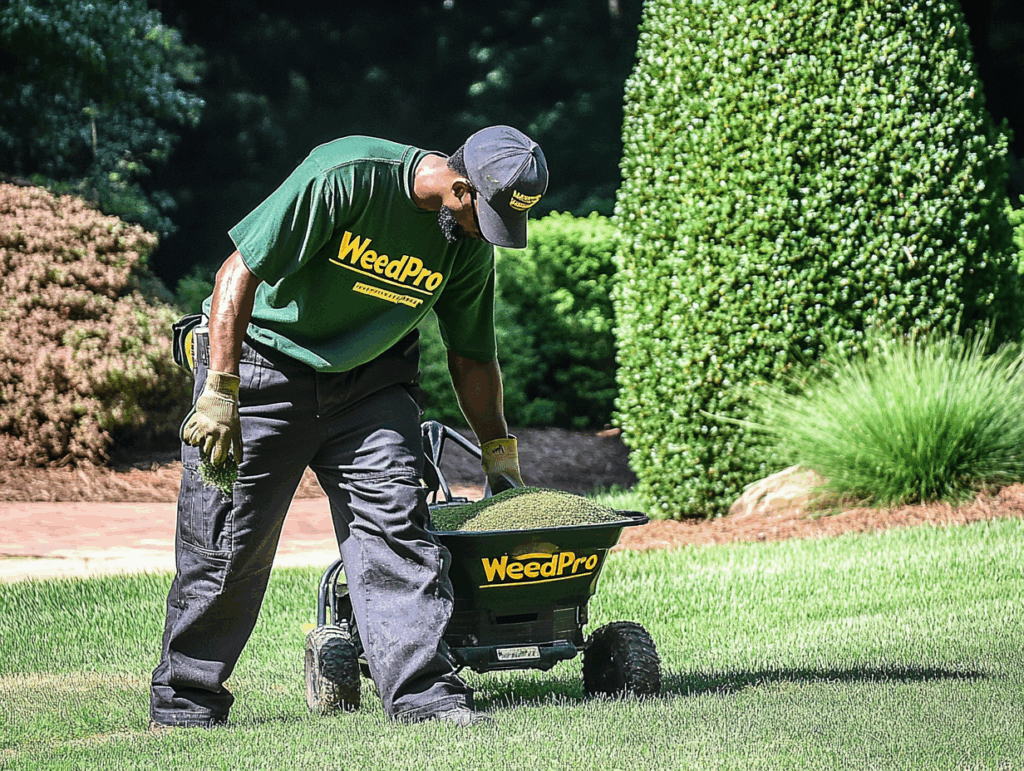
Not every top dressing material is the same; the right combination will significantly improve soil nutrients, address compaction effects, and also enhance the lawn for long-term benefits. Sand mixtures make good drainage mixtures, but the organic material will solidify for the weeks leading up to germination / or seeding time. Just as unique as your lawn conditions are, the available materials will also be tailored to the Atlanta climate, offering different effects. Additionally, we offer guidance for a fraction of the cost of your investment. We aim to be professional contributors to your expertise, providing valuable insights to support you throughout all seasons.
Contact WeedPro to be certain of the right material for top dressing with professional service for your lawn.
FAQs
Can compost be used as a standalone top dressing material?
Yes, compost is effective on its own, especially for boosting organic matter and soil nutrients.
Is sand top dressing recommended for Atlanta lawns?
Sand can be useful for improving drainage and leveling, but it should be combined with other materials for best results.
How do you know which material is right for your lawn?
It depends on your soil test results, grass type, and overall goals—professional input is strongly recommended.
Know When It’s Time to Call the Experts
Eco-friendly repellents are a great start, but sometimes the problem is too big for DIY methods alone. Learn how to recognize when mosquitoes are out of control by reading our article: “Top Signs You Need Professional Mosquito Control Services in Alpharetta Right Now.”

